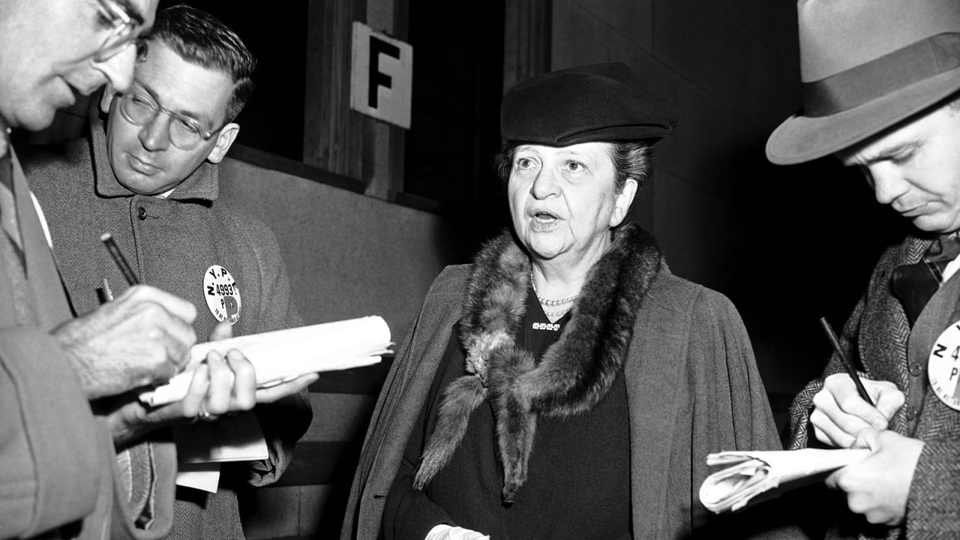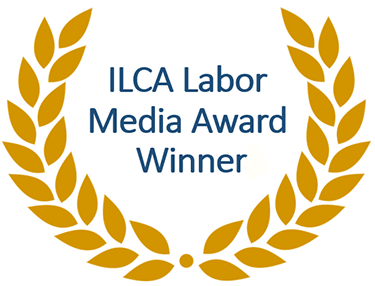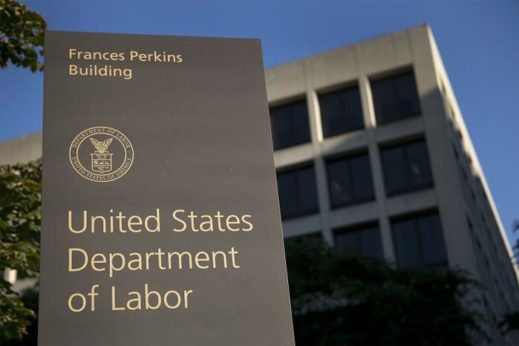
2019 ILCA PW Winner, HONORABLE MENTION Best Labor History Story
International Women’s Day 2018 comes in the midst of a tumultuous time. The current White House administration under Donald Trump continues to attack the rights of workers, women, people of color, immigrants, and other marginalized communities. Discussions about lasting systemic change—about socialism—have been put center stage once again as working people struggle to hold onto the rights they have won in the past and embark on fights for new ones.
 The rights (and the strength) of women, in particular, have been galvanized in mainstream media by the #MeToo and #TimesUp campaigns. This has culminated, so far, in a record number of women running for political office across the country, a development which will certainly shift the political tide in a more progressive direction. With this march to the mid-term elections, it seems fitting then to highlight on this day a woman who exemplified the strength and leadership in political office that made historic strides for not only women, but all working people. The first woman appointed to the U.S. cabinet, and the longest person to hold the position of U.S. Secretary of Labor, Frances Perkins, is just such a woman.
The rights (and the strength) of women, in particular, have been galvanized in mainstream media by the #MeToo and #TimesUp campaigns. This has culminated, so far, in a record number of women running for political office across the country, a development which will certainly shift the political tide in a more progressive direction. With this march to the mid-term elections, it seems fitting then to highlight on this day a woman who exemplified the strength and leadership in political office that made historic strides for not only women, but all working people. The first woman appointed to the U.S. cabinet, and the longest person to hold the position of U.S. Secretary of Labor, Frances Perkins, is just such a woman.
In the service of working people
Frances Perkins was an American sociologist and workers-rights advocate. On March 4, 1933, newly elected President Franklin D. Roosevelt made Perkins the first woman cabinet member in the nation’s history. During her tenure as Secretary of Labor, she championed many groundbreaking government policies, such as the National Labor Relations Act, the Fair Labor Standards Act, and the Social Security Act. These policies, and others, would become part of the historic New Deal—the series of federal programs, financial reforms, public works projects, and regulations enacted in the U.S. in the 1930s that helped bring the country out of the Great Depression.
Perkins may be remembered as essential architect of the historic New Deal, but her development into a leader for social change was decades in the making. From her earliest years, her experiences and observations ignited a passion to advocate for working people.
While living in Chicago in the early 1900s, Perkins spent her free time and vacations working in two of the oldest and most well-known settlement houses in the country, the Chicago Commons and Hull House. When speaking of her time working with the poor and unemployed, Perkins is quoted as saying, “I had to do something about unnecessary hazards to life, unnecessary poverty. It was sort of up to me.”
In 1907, she became general secretary of the Philadelphia Research and Protective Association. The goal of that organization was to fight against the abduction of newly arrived immigrant girls, as well as black women from the South, into prostitution. Beginning just three years later, as head of the New York Consumers’ League, Perkins would go on to lead in lobbying the state legislature for a law restricting the hours of women workers to fifty-four hours a week.
The day the New Deal was born
Perkins, from very early on, was a leader in the working class struggle, but it was the events of 1911 that inspired many of the New Deal programs she would later help implement.

That year, on March 25, she witnessed the devastating Triangle Shirtwaist Factory fire. Considered the deadliest industrial fire in New York City’s history, and one of the deadliest in the United States, the tragedy claimed the lives of 146 garment workers—123 women and 23 men. The high death toll was caused by the exploitative practices of the factory bosses, who had locked the doors to the stairwells and exits—a common practice at the time to prevent workers from taking breaks. Company greed sealed the fate of many of the workers who tried to escape the fire by jumping from the high floors of the factory to their deaths.
In response to the fire, a citizen’s Committee on Safety was established; Perkins served as its executive secretary. The work of the committee resulted in the most comprehensive set of laws governing workplace health and safety in the nation at the time. The legislation became a model for other states and the federal government. Perkins would later note that March 25, 1911—the day of the Triangle Shirtwaist Factory fire—was “the day the New Deal was born.”
Challenging Hoover and pushing Roosevelt
During the early days of the Great Depression, Perkins refused to stay silent about the hardships being inflicted on working people. Challenging the administration of then-President Herbert Hoover in 1930, Perkins spoke on the steady decline of employment and the rise of poverty that his administration was attempting to downplay.
It was during this time that she advocated for unemployment insurance—a novel proposal at the time—while working under Roosevelt, who was then still New York’s governor. Under the advisement of Perkins, Roosevelt became the first public official to support unemployment insurance. It would be one of many times that Roosevelt was greatly influenced by Perkins’s expertise when it came to labor. This working relationship would reach its apex when Roosevelt was elected president and asked Perkins to take on the position which sealed her place in history.
As explained by long-time labor activist Bea Lumpkin, who once met Perkins, she “outlined her vision for overcoming the Great Depression. She proposed federal aid to pay unemployment relief, extensive public works projects to create jobs, laws for a minimum wage and maximum work week, abolition of child labor, old age pensions, and a federal-state employment service. In short, she outlined a New Deal.”
Perkins told Roosevelt she wouldn’t agree to being Secretary of Labor unless her vision was made a priority. Roosevelt agreed, thus setting the course for the New Deal to come to fruition.
Enemy of capital
Although President Roosevelt often supported Perkins, she was not as popular among some of her other colleagues. Being a woman, and also someone who advocated for the rights of workers as opposed to big business’s bottom line, Perkins was a target for powerful business interests and their political representatives who sought to have her removed.

After Martin Dies’s House Un-American Activities Committee charged her with protecting communists, a motion was introduced to impeach Perkins. The charge was initiated by her defense of Australian-born American union leader Harry Bridges. Bridges had been a leader of a West Coast dock workers’ strike in 1934—the San Francisco General Strike, as it became known. In retaliation, an effort was made to deport Bridges on the charge of being a communist.
Although records indicate that Perkins did not like Bridges, she defended his rights and insisted proper procedure be followed in handling his case. This did not sit well with big capital or conservatives. Fortunately, the campaign mounted to impeach Perkins did not win out, but the aggression and discrimination she experienced as a woman leader remained ever present.
After Roosevelt’s death in 1945, Perkins resigned from her position. She and the Interior Secretary, Harold L. Ickes, were the only original members of the Roosevelt cabinet to remain in office for his entire presidency. Perkins achieved many of the points she set out in her vision for the New Deal, except for her push for universal access to healthcare.
She left behind a legacy that shaped and made possible much of the progressive gains made from the mid-20th century onward. It was a dialectical relationship between the mass pressure that unions and their supporters built on the ground and the policy actions by those like Perkins who made the labor law regime of the New Deal a possibility.
Perkins was wise enough to know that the battle would continue after she was gone, of course, and she fought to arm working people with the legal position to continue their fight for a betterment of life.
As Perkins once said, “There is always a large horizon…. There is much to be done…. I am not going to be doing it! It is up to you to contribute some small part to a program of human betterment for all time.”
May we remember her words, and her work, on International Women’s Day and every day after.
To find out more about Perkins visit the website of the Frances Perkins Center.










